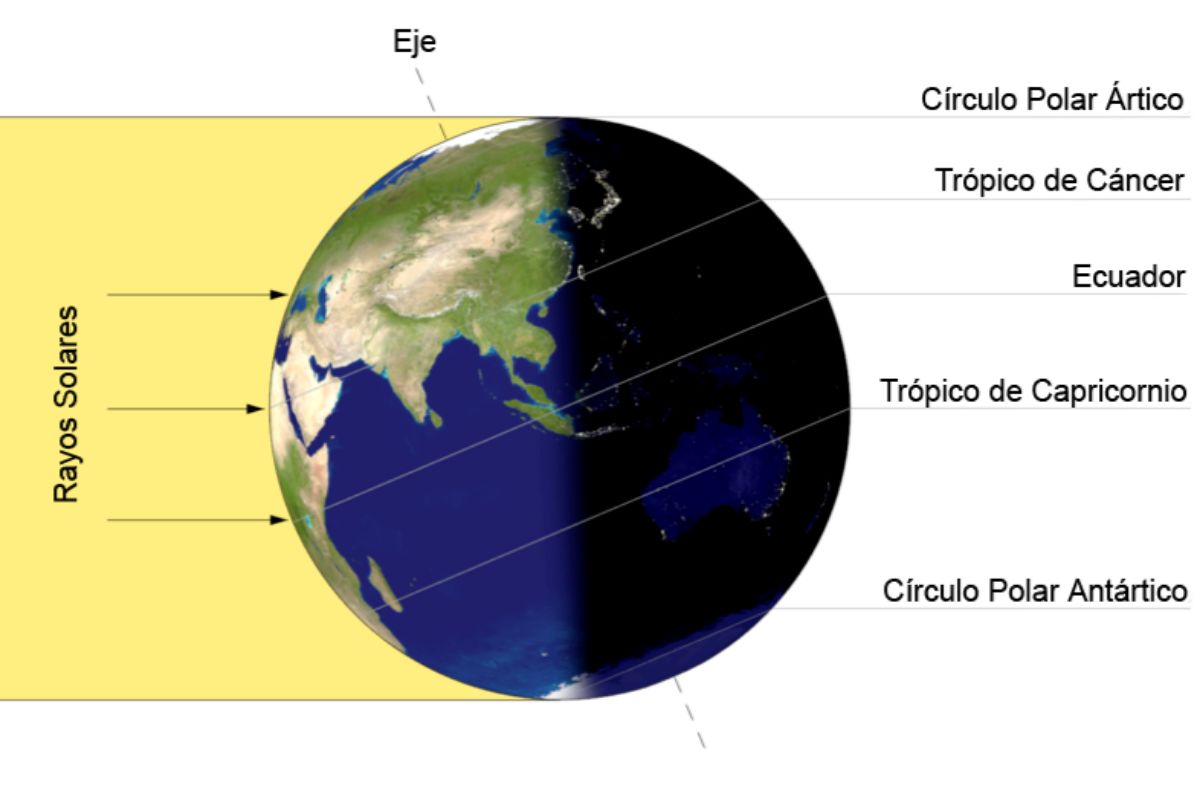- Appointment with the sky. Last afternoons with Mercury
- Chronicles of the cosmos. Vibrant dark matter controversy
The summer is here. We offer you the ten astronomical keys to enjoy the sky throughout the season.
1) Start
The summer of the Northern Hemisphere (and the winter in the South) will begin on June 20 at 11:44 pm PEN (22:44 in the Canary Islands).
2) The shortest night
On the summer solstice day the shortest boreal night occurs. On this day, in Madrid, the night will last 8 hours and 57 minutes, while there will be 15 hours and 3 minutes of sunlight. Oddly enough, the longest day of the year is not the day the sun rises earlier, nor is it the day the sun sets later . This is because the Earth's orbit is an ellipse and the axis of this ellipse has nothing to do with the inclination of the Earth's axis that defines the seasons. The earliest sunrise of 2020 occurred on June 15, while the latest sunset will take place on June 27.
3) Morning and evening stars
During the dawns of this summer Mars, Venus and Mercury will be visible (the latter only from mid-July to early August). Jupiter and Saturn will be visible for most of the night until the end of July, and in the first part of the night the rest of the summer.
4) Perseids
If the weather is good, this will be a good summer to observe the Perseids, the most famous meteor shower of the year . This is because the maximum activity of the rain, on August 12, will take place with the moon in the waning quarter. It will therefore be preferable to observe them before our satellite rises, which will happen at 02:00 in the morning.
5) Two eclipses
This summer it will have two eclipses. On June 21 there will be an annular eclipse of the Sun that will be visible from parts of Africa, Southeast Europe and Asia (but will not be visible from Spain). On July 5 there will be a penumbral eclipse of the moon visible from America, Africa and Europe. This last eclipse will be visible from Spain and, when the time comes, these Dating with Heaven will offer all the details about the phenomenon.
6) Full moon
The three full moons this summer will take place on July 5 ( hay moon ), August 3 ( grain moon ) and September 2 ( fruit moon ).
7) Static sun
The days before and after the 20th the maximum height of the Sun at noon does not change much in the sky. Hence comes the word solstice means sun static .
8) Far from the Sun
On the summer solstice, Earth's North Pole is closer to the Sun than the South Pole. Seen from Earth, the Sun is found at noon in the Tropic of Cancer, its northernmost possible position . The paradoxical circumstance occurs that the summer of the Northern Hemisphere arrives when the Earth, in its elliptical movement around the Sun, is as far away from the sun as possible. The farthest point, called aphelion, will be reached on July 4, 2020, when the Earth is about 152.5 million kilometers from the Sun, that is, five million kilometers further than in the perihelion position by the that we spent last January 5th.
9) The long polar day
At the North Pole, the nightless period that began on March 20 is now at its midpoint, with another three months of sunlight left until fall comes and a six-month period of night begins.
10) The longest season
Summer is always the longest of the four seasons. This is due to Kepler's Second Law: the line connecting the Earth to the Sun sweeps equal areas in equal times. Because the Earth is now in its positions of greatest distance from the Sun, it moves with less speed, which translates into the longest duration of summer compared to the other three seasons. This summer will last 93 days and 15 hours and will end on September 22, 2020 with the arrival of autumn.
Rafael Bachiller is director of the National Astronomical Observatory (National Geographic Institute) and academic of the Royal Academy of Doctors of Spain .
In accordance with the criteria of The Trust Project
Know more- science
- Science and health
EnvironmentSiberia will take more than 10 years to recover from the thermal power plant spill
EnvironmentSpain will wear blue flags on 589 beaches, 23 more than last year
Meteorology May 2020 has been the hottest month since 1965
See links of interest
- News
- Translator
- Programming
- Calendar
- Horoscope
- Classification
- League calendar
- Films
- Cut notes
- Themes
- Ruiz Zafon
- Unicaja - Barça
- Norwich City - Southampton
- Granada CF - Villarreal
- Mallorca - Leganés
- Seville - Barcelona

